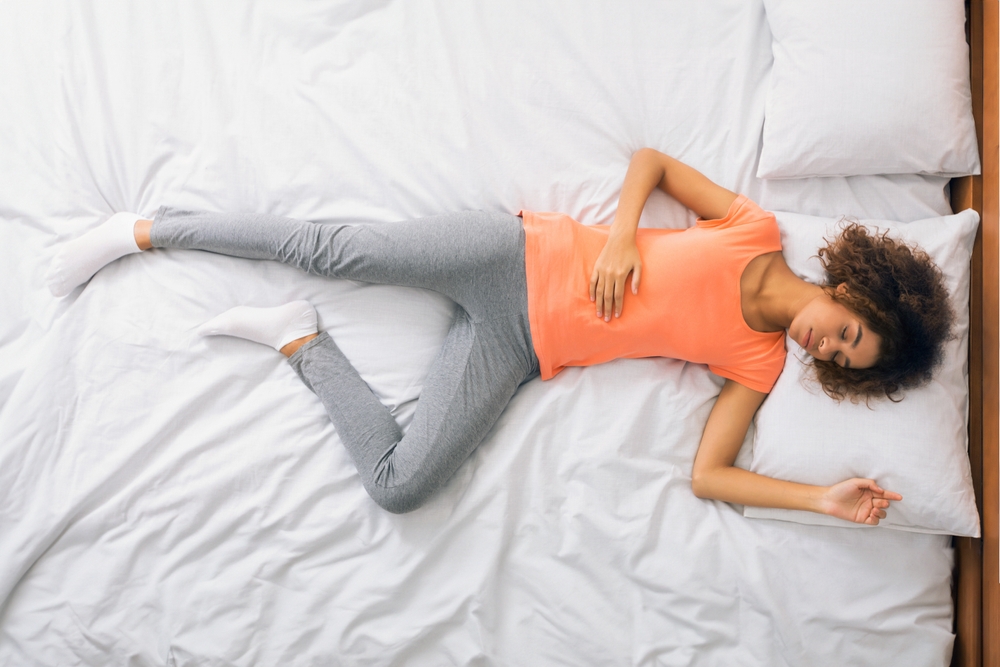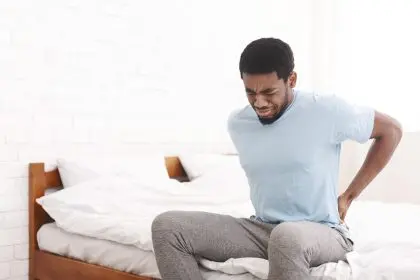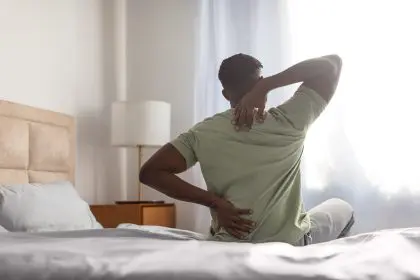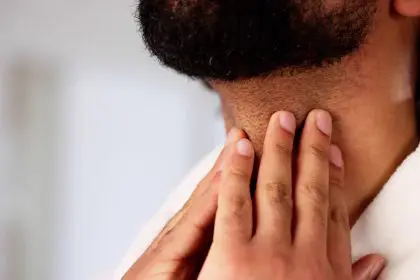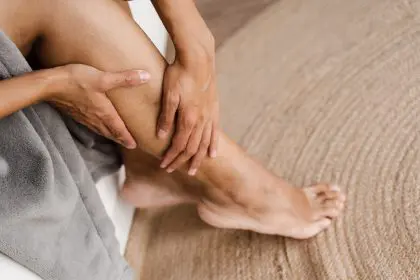The position we adopt during sleep profoundly affects our physical health, mental wellbeing, and sleep quality. While many view sleep position as merely a matter of personal preference, research indicates that specific positions directly impact spinal alignment, breathing efficiency, and pain levels. With approximately one-third of our lives spent sleeping, optimizing body positioning represents a simple yet powerful intervention that can transform sleep quality without medication or expensive equipment.
Left side sleeping delivers multiple health advantages
Left side sleeping stands out as particularly beneficial for individuals with specific health concerns. This position naturally creates optimal spinal alignment by maintaining proper relationship between the hips and head, effectively reducing pressure on the lumbar region of the back and minimizing strain on the cervical spine.
Research published in the Journal of Clinical Gastroenterology demonstrates that left side sleeping significantly reduces acid reflux symptoms compared to other positions. This benefit stems from stomach position relative to the esophagus, which prevents stomach acid from flowing upward. For individuals suffering from persistent heartburn, this positional change alone can dramatically improve sleep quality.
The left lateral position also enhances breathing efficiency by opening airways and reducing compression on the lungs. Studies monitoring oxygen saturation levels during sleep reveal that side sleeping maintains higher oxygen levels than supine positions, particularly in individuals with sleep-disordered breathing. For those with sleep apnea or snoring tendencies, left side sleeping often reduces symptom severity by preventing the tongue from falling backward into the throat.
Right side positioning reduces pressure points
Right side sleeping delivers distinct benefits that complement its left-sided counterpart. This position creates excellent spinal alignment from the shoulders through the tailbone, making it particularly effective for individuals suffering from lower back discomfort or cervical spine irritation that fails to respond to other positions.
Cardiovascular research indicates potential benefits for heart health when sleeping on the right side. This position reduces pressure on the heart itself while maintaining good circulation throughout the body. Studies monitoring heart rate variability during sleep demonstrate more consistent patterns in right side sleepers compared to those sleeping in other positions.
Mental health researchers have observed correlations between right side sleeping and reduced anxiety symptoms. While the exact mechanism remains under investigation, theories suggest this position may optimize blood flow to regions of the brain associated with stress regulation. Sleep diaries from study participants indicate fewer middle-of-night awakenings and reduced sleep onset time when adopting this position.
Back sleeping creates perfect spinal alignment
Supine sleeping positions provide unparalleled spinal alignment benefits when properly supported. This position distributes body weight evenly across the posterior surface, eliminating pressure points that often develop in side sleeping arrangements. The natural curve of the spine remains properly supported, reducing strain on vertebral discs.
Back sleeping positions prove particularly beneficial for individuals recovering from surgery or managing chronic edema conditions. By eliminating gravitational pressure on specific body regions, fluid accumulation decreases, supporting faster recovery and reduced inflammation. Research tracking post-surgical recovery demonstrates faster healing and reduced pain medication needs in patients who primarily sleep on their backs.
However, this position presents significant challenges for certain populations. Individuals with sleep apnea experience worsened symptoms in supine positions as gravity pulls the tongue and soft palate backward, narrowing the airway and increasing breathing obstructions. Similarly, people who snore typically experience amplified noise levels when sleeping on their backs due to the same anatomical factors affecting airway patency.
Elevated positions alleviate respiratory difficulties
Sleeping with the upper body slightly elevated creates substantial benefits for individuals with respiratory concerns, seasonal allergies, or nasal congestion. This position, achieved through adjustable beds or specialized pillows, utilizes gravity to enhance drainage from the sinuses while preventing postnasal drip that often triggers coughing during horizontal sleep.
Research published in the American Journal of Respiratory and Critical Care Medicine demonstrates that elevation between 30-45 degrees significantly reduces sleep apnea severity in most patients. This improvement occurs because elevation prevents the collapse of upper airway tissues that commonly occurs in horizontal positions, maintaining airway patency throughout sleep cycles.
Individuals with acid reflux also benefit from elevated sleeping positions. Studies monitoring esophageal acid exposure show dramatic reductions when patients sleep with their upper bodies elevated. This position uses gravity to keep stomach contents from traveling upward into the esophagus, preventing the burning sensation that frequently disrupts sleep.
Stomach sleeping provides limited benefits
Prone sleeping represents the least recommended position from an anatomical perspective, though it does offer specific advantages for certain conditions. This position places significant strain on the cervical spine by requiring the head to rotate laterally for extended periods, often leading to morning stiffness and potential nerve impingement.
Despite these disadvantages, stomach sleeping proves remarkably effective for reducing snoring and certain forms of sleep apnea. The prone position naturally prevents the tongue from falling backward into the throat, maintaining airway patency throughout the night. For individuals whose primary sleep disruption stems from breathing difficulties rather than musculoskeletal concerns, this position may provide net benefits despite its spinal drawbacks.
Research tracking sleep quality indicates that stomach sleepers experience more frequent position changes throughout the night compared to other sleep positions. These movements potentially disrupt deep sleep phases, resulting in less restorative rest despite similar total sleep duration. Sleep specialists typically recommend this position only when other approaches fail to address significant breathing difficulties.
Optimizing your chosen position with proper support
Regardless of preferred sleeping position, proper support dramatically enhances comfort and alignment. Side sleepers benefit significantly from placing a firm pillow between the knees, which maintains proper hip alignment and reduces rotational stress on the lumbar spine. Studies measuring spinal angles during sleep demonstrate near-perfect alignment when this simple modification is implemented.
Back sleepers should consider placing a small, firm pillow beneath the knees to reduce pressure on the lower back. This slight elevation relaxes the psoas muscle group and naturally flattens the lumbar spine against the mattress, eliminating the gap that often develops between the lower back and sleeping surface in supine positions.
Stomach sleepers can reduce cervical strain by using very thin pillows or no pillow at all, minimizing neck rotation. Some specialists recommend placing a firm pillow under the pelvis to reduce lumbar hyperextension that commonly occurs in this position. While these modifications cannot eliminate all disadvantages of prone sleeping, they significantly reduce potential complications.
Transitioning to healthier sleeping positions
Changing established sleep positions requires patience and consistent effort. Sleep scientists recommend gradual transitions rather than attempting immediate changes, which often prove unsustainable. Starting by falling asleep in the desired position, even if you eventually shift during the night, establishes new physical patterns that gradually become habitual.
Physical modifications to the sleep environment can reinforce position changes. Body pillows provide substantial support for side sleeping, creating physical barriers that discourage rolling onto the back or stomach. Similarly, specialized wedge pillows help maintain elevated positions throughout the night without slipping.
Sleep tracking technology offers valuable feedback during position transition efforts. Basic motion sensors can document position changes throughout the night, helping individuals understand their unconscious movement patterns and implement more effective interventions. This objective data often proves more valuable than subjective morning assessments of sleep position.
With patient implementation of these strategies, most individuals can successfully modify their sleep positions within 2-3 weeks. The resulting improvements in sleep quality, pain reduction, and breathing efficiency provide powerful motivation to maintain these changes long-term, transforming not just nightly rest but overall health and daytime functioning.

